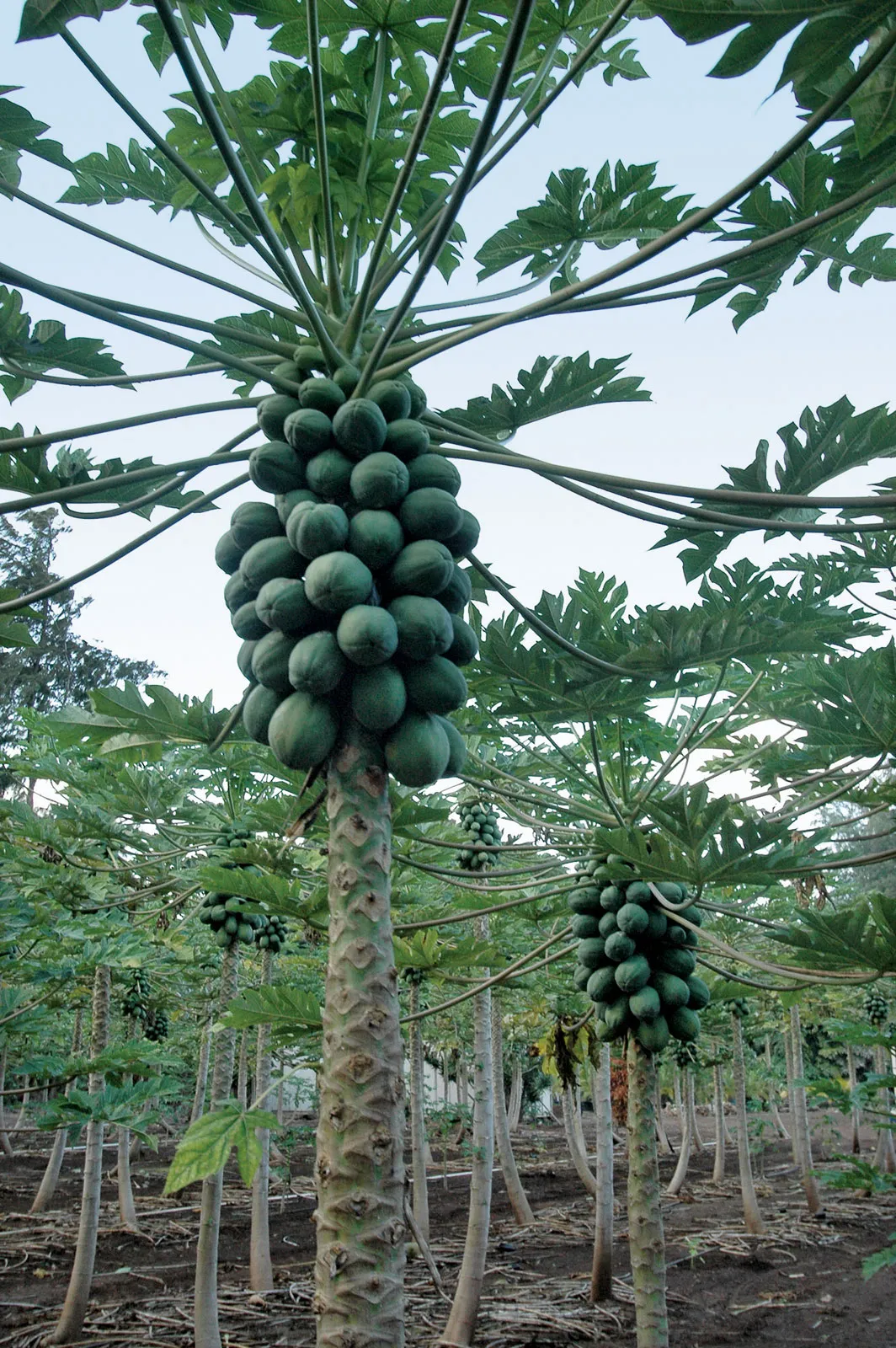
Papaya
Carica papaya
Basic Information
🌿 Family: Caricaceae🗺️ Zone: 9-11
Other Names:
- Pawpaw
🌡️ Ideal Temperature : 70°F°F – 90°F°F
🔥 Heat Tolerance: Up to 100°F°F
❄️ Cold Tolerance: Down to 31°F°F
🌱 Type: Perennial
Layers
- Canopy
Functions
- Edible
- Medicinal
- Wildlife Attractor
- Mulcher
- Dynamic Accumulator
- Erosion Control
- Animal Fodder
- Border Plant
- Pest Management
Pests
Description
Papaya is a fast-growing, tropical fruit tree native to Central America. It typically reaches heights of 3-10 meters (10-33 feet) with a single, unbranched trunk topped by a crown of large, palmate leaves. The tree produces oval-shaped fruits with green skin that ripen to yellow or orange, containing sweet, orange flesh and numerous black seeds.
🌞💧 Sun and Water Requirements:
Papayas thrive in full sun and well-drained soils. They require consistent moisture but are sensitive to waterlogged conditions, which can lead to root rot. Regular watering is essential, especially during dry periods.
✂️🫘 Methods to Propagate:
Propagation is commonly done through seeds. To grow from seed:
1. Extract seeds from a ripe papaya fruit.
2. Clean and dry the seeds.
3. Plant seeds directly in the desired location, as papayas do not transplant well due to their sensitive root systems.
4. Seeds typically germinate in about two weeks.
🧑🌾👩🌾 When to Harvest:
Harvesting occurs when the fruit's skin changes from green to yellow, usually 6-9 months after planting. Fruits can be picked when partially yellow and allowed to ripen off the tree.
Purpose
- Edible: The sweet, orange flesh of the papaya is consumed fresh, added to salads, or used in beverages.
- Medicinal: Papaya contains the enzyme papain, which aids digestion and has anti-inflammatory properties.
- Wildlife Attractor: The fruits and flowers attract birds, bees, and other pollinators.
- Mulcher: Fallen leaves decompose quickly, enriching the soil with organic matter.
- Dynamic Accumulator: Papaya roots absorb nutrients from deep soil layers, making them available to other plants upon leaf drop.
- Erosion Control: The tree's root system helps stabilize soil, reducing erosion.
- Animal Fodder: Leaves and unripe fruits can be used as feed for livestock.
- Border Plant: Its fast growth makes it suitable for creating quick green borders or screens.
- Pest Management: Papaya's presence can deter certain pests, and its leaves have been used in natural pest control preparations.